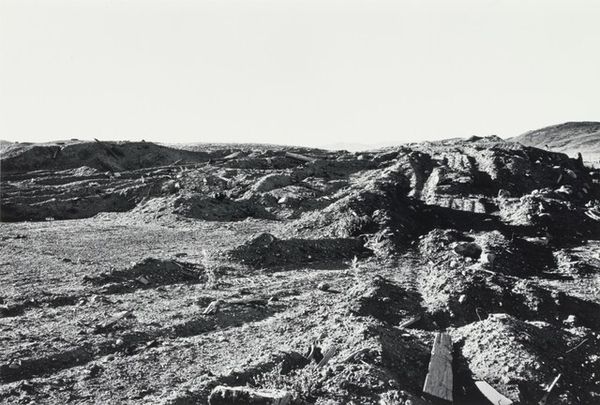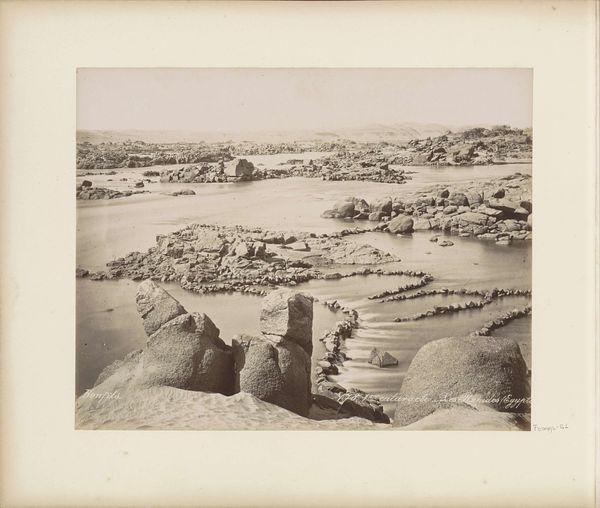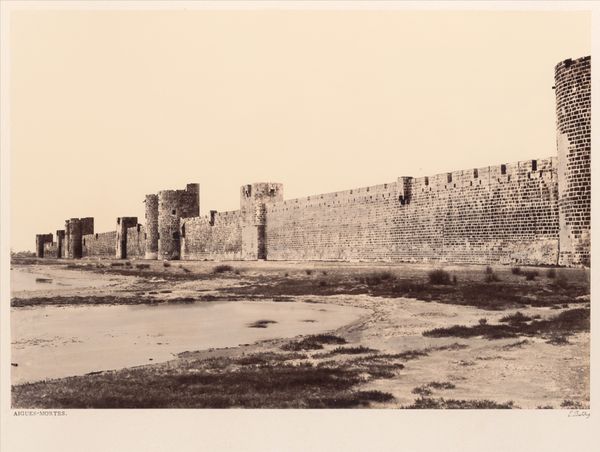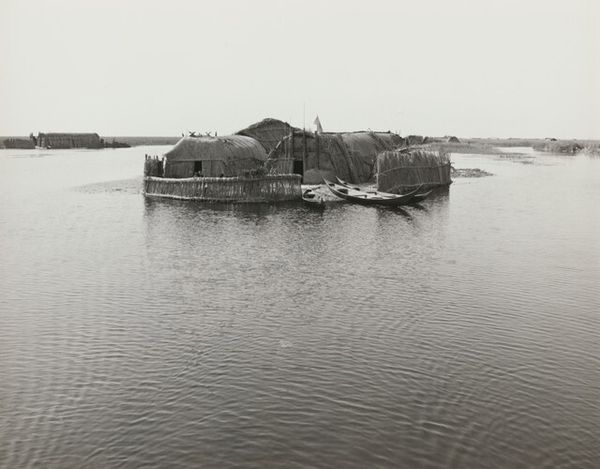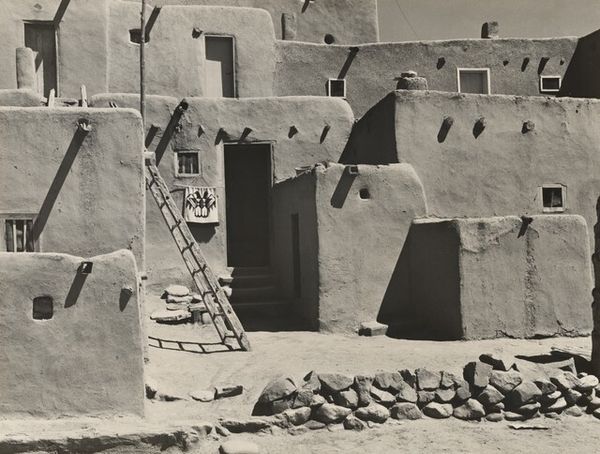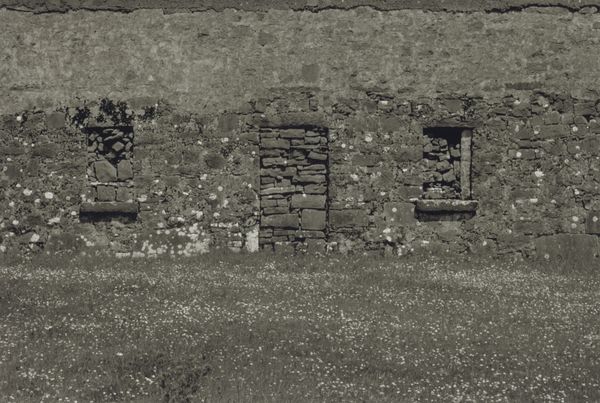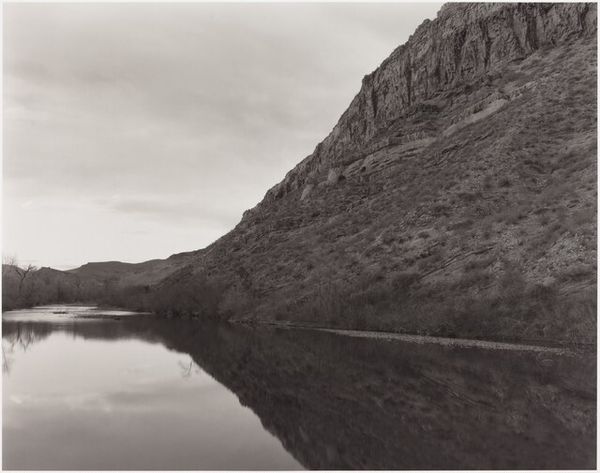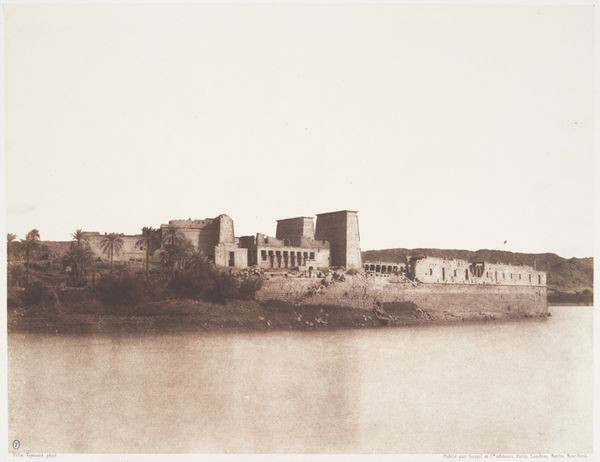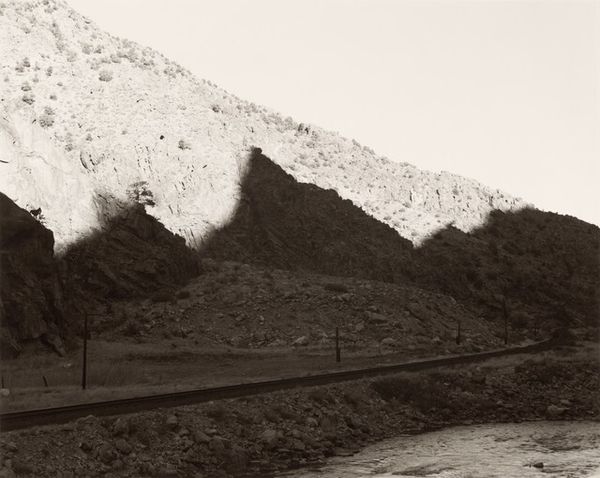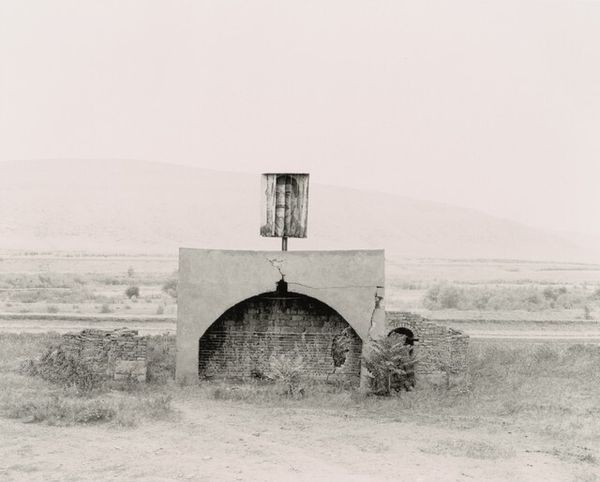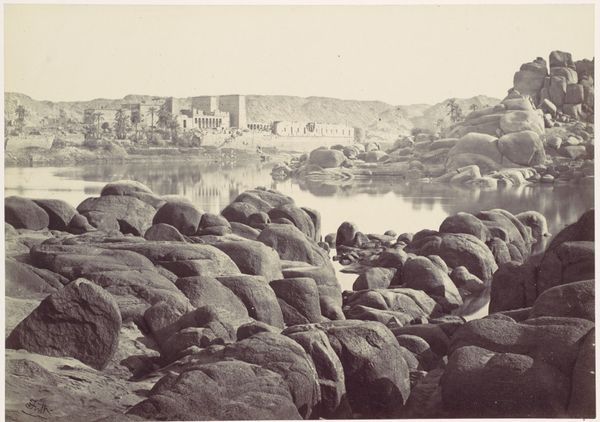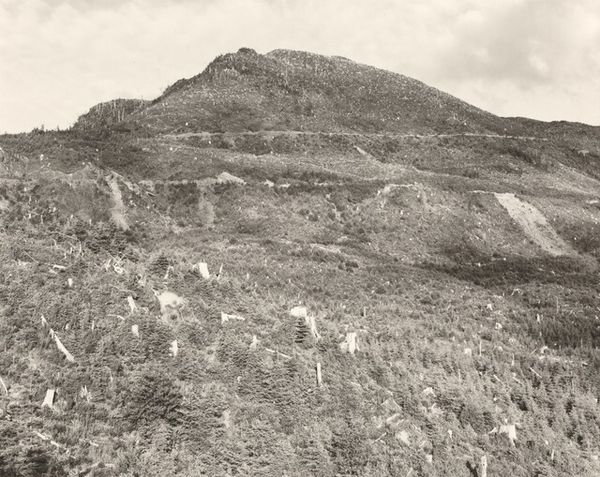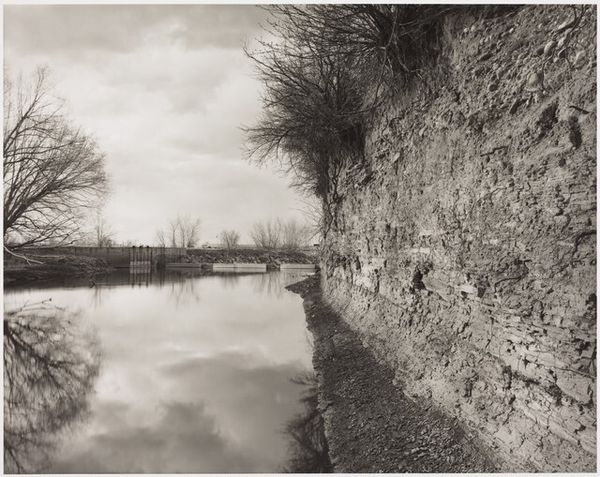
photography, gelatin-silver-print, architecture
#
black and white photography
#
countryside
#
landscape
#
photography
#
outdoor scenery
#
gelatin-silver-print
#
monochrome photography
#
architecture
#
monochrome
Dimensions: overall: 36.8 x 25.9 cm (14 1/2 x 10 3/16 in.)
Copyright: National Gallery of Art: CC0 1.0
Curator: Ansel Adams's "Pool, Acoma Pueblo, New Mexico" is a gelatin silver print from sometime between 1942 and 1981. Editor: It feels austere, almost otherworldly. The monochromatic palette simplifies the already stark landscape. It makes you wonder about life in such a seemingly isolated place. Curator: Adams’s work frequently intersects with ideas of wilderness and preservation. But placing it in the context of Acoma Pueblo shifts the focus somewhat. The pueblo is one of the oldest continuously inhabited communities in the United States. Adams captures both a landscape and a place brimming with history. Editor: It is that history that resonates. Look how the reflection in the water seems to melt the structures into the landscape. It subtly implies the long arc of time and connection with the land. Is this a romantic view or a respectful portrayal of the landscape? It can be challenging to decipher intent in a medium like photography, right? Curator: Photography, particularly by someone like Adams, participates in constructing national narratives and influencing public opinion on the management and presentation of natural resources, though. There's an undeniable tension between aestheticizing the landscape and acknowledging the lived realities, especially of indigenous communities within that landscape. His style evokes the West of rugged individualism while capturing images of Pueblo life and landscape. Editor: I suppose. I find something captivating in the mirrored image, a sort of peaceful duplication of life. Despite the hard realities of the high desert. But your insight helps remind viewers that what the work might reveal often hinges on what one expects and who controls its viewing. It gives pause. Thank you. Curator: It does highlight the complexities inherent in viewing historical images. An understanding of historical perspectives should challenge, perhaps not spoil, aesthetic viewing.
Comments
No comments
Be the first to comment and join the conversation on the ultimate creative platform.
